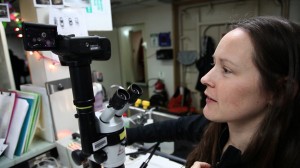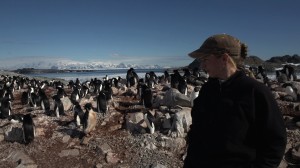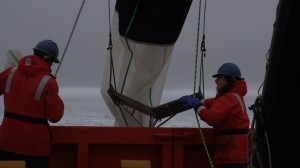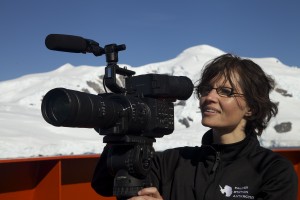Let’s tell it like it is: women are greatly underrepresented in many fields of science and engineering although great gains in women’s participation have been seen in the biological sciences over the past three decades.
What you may not know is that in the world’s film industry, women are also highly underrepresented. In 2011, women made up only 5% of all directors working on the top 250 domestic grossing films.
Today, more than just the ice is beginning to melt. Women’s participation in marine science and filmmaking is increasing and this is seen in the work captured by the Antarctic Quest Team.
Women make up half of the research and film team. Among them are zooplankton expert Debbie Steinberg, penguin specialist Donna Fraser, and phytoplankton expert Grace Saba. In the previous blog, you met Jen Mannas, who is a wildlife biologist.
Also aboard is award winning filmmaker, Dena Seidel. Seidel has traveled over 9,000 miles to arrive in the Antarctic, pressing through the ice to record unfolding climate change and its effect on this rapidly deteriorating land. She too, along with the female scientists on board, are heralding in a new era. Beyond the ice in Antarctica, lies another story. Women are breaking new grounds, pressing beyond the reaches of society’s confines and contributing to our greater understanding of Antarctica and our changing planet.
For other stories about women in marine sciences, see:
United Nations (UNESCO) Intergovernmental Oceanographic Commission, Women Marine Scientists:
http://www.unesco.org/new/en/natural-sciences/ioc-oceans/priority-areas/gender-equality/women-marine-scientists-share-their-stories/







 Follow the
Follow the  Subscribe to the blog RSS feed
Subscribe to the blog RSS feed